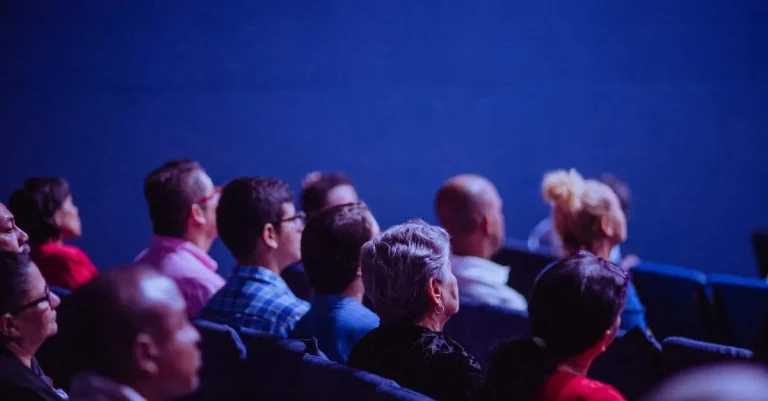Is Statistics An Art Or A Science? A Comprehensive Answer
Statistics plays a vital role in our lives today. From analyzing trends in the stock market to measuring the effectiveness of a new drug, statistics helps us make sense of complex data. But is the discipline of statistics fundamentally scientific or artistic in nature?
This age-old debate continues to divide statisticians and data analysts today.
If you’re short on time, here’s a quick answer to your question: statistics utilizes scientific and mathematical principles, but also requires creativity and subjective judgment more associated with the arts.
Ultimately, statistics is an interdisciplinary field that blends elements of both art and science.
Statistics Relies on the Scientific Method
Statistics is firmly rooted in the scientific method, which is a systematic approach to gathering, analyzing, and interpreting data. Just like any scientific discipline, statistics follows a set of principles and techniques to ensure that the conclusions drawn from data are reliable and valid.
Uses Mathematical Models and Formulas
One of the key ways in which statistics aligns with the scientific method is through the use of mathematical models and formulas. These mathematical tools allow statisticians to represent complex data in a concise and understandable format.
By applying these models, statisticians can make predictions, identify patterns, and uncover relationships between variables.
Tests Hypotheses and Draws Conclusions from Data
Statistics also follows the scientific method by testing hypotheses and drawing conclusions based on empirical evidence. Statisticians collect data through various methods, such as surveys, experiments, or observational studies.
They then analyze the data using statistical techniques to determine if there is evidence to support or reject their hypotheses. This process ensures that statistical findings are based on objective evidence rather than personal opinions or biases.
Statistical Significance and Probability
In addition, statistics incorporates the concepts of statistical significance and probability, which are fundamental to the scientific method. Statistical significance is a measure of how likely an observed effect is due to chance.
It allows statisticians to determine if a result is meaningful or if it could have occurred by random variation alone. Probability, on the other hand, quantifies the likelihood of a particular event occurring.
These concepts enable statisticians to make informed decisions and draw meaningful conclusions from the data.
Statistics Requires Subjective Choices and Creativity
While statistics is often considered a scientific field, it also involves subjective choices and creativity. This is because statisticians must make decisions and use their judgment when analyzing data and drawing conclusions.
They are not simply following a set of predefined rules, but rather they must apply their expertise and intuition to make informed choices.
Choosing Appropriate Statistical Tests
One area where statisticians exercise subjective choices is in selecting the appropriate statistical tests for a given research question. There are various tests available, each with its own assumptions and requirements.
Statisticians must carefully consider the nature of the data, the research objective, and any underlying assumptions to choose the most appropriate test. This requires a deep understanding of statistical theory and a creative approach to problem-solving.
Determining Sample Size and Data Collection Methods
Another aspect of statistics that involves subjective choices is determining the sample size and data collection methods. Statisticians must consider factors such as the desired level of confidence, the variability of the data, and the resources available.
They need to strike a balance between collecting enough data to ensure reliable results and keeping the study feasible and cost-effective. This decision-making process requires both scientific knowledge and practical judgment.
Visualizing and Communicating Data Meaningfully
One of the creative aspects of statistics is the ability to visualize and communicate data meaningfully. Statisticians often use graphs, charts, and other visualizations to present data in a way that is easy to understand and interpret.
They must consider the target audience and the purpose of the communication when deciding on the most appropriate visualization techniques. This involves creativity in designing visually appealing and informative representations of the data.
Prominent Statisticians Have Debated the Art vs. Science Question
The question of whether statistics is an art or a science has been a topic of debate among prominent statisticians throughout history. These experts have presented differing viewpoints, each contributing to our understanding of the field.
Let’s explore the perspectives of three influential statisticians: R.A. Fisher, William Sealy Gosset, and John Tukey.
R.A. Fisher – Statistics as a Branch of Applied Mathematics
Ronald Aylmer Fisher, one of the most influential statisticians of the 20th century, argued that statistics should be considered a branch of applied mathematics. Fisher believed that the primary goal of statistics is to develop mathematical models and techniques for analyzing data.
He emphasized the importance of rigorous mathematical foundations in statistical theory and methodology.
Fisher’s perspective aligns with the idea that statistics is a science, as it involves systematic study and application of mathematical principles. By approaching statistics from a mathematical perspective, Fisher paved the way for advancements in statistical theory and experimental design.
William Sealy Gosset – Statistics Requires Judgment and Intuition
William Sealy Gosset, known by his pen name “Student,” was a pioneer in the field of modern statistics. Gosset emphasized the importance of judgment and intuition in statistical analysis. He argued that while statistics is grounded in mathematics, it also requires subjective interpretation and decision-making.
Gosset’s viewpoint leans towards the idea that statistics is an art, as it involves the application of subjective judgment and creativity in interpreting and communicating data. His contributions to statistical theory, particularly the development of the Student’s t-test, highlight the need for both mathematical rigor and intuitive insight in statistical analysis.
John Tukey – Statistics as Data Analysis, Not Just Math
John Tukey, a renowned statistician, took a different approach to the debate. He believed that statistics is primarily concerned with data analysis rather than being solely a branch of mathematics. Tukey emphasized the importance of exploratory data analysis and the use of graphical techniques to uncover patterns and insights.
Tukey’s perspective suggests that statistics is both an art and a science. While it relies on mathematical principles, it also involves creative problem-solving and visualization techniques. His contributions, such as the development of the box plot and the concept of the “bit,” have revolutionized the way statisticians analyze and interpret data.
Statistics Has Elements of Both According to Modern Viewpoints
When it comes to the question of whether statistics is an art or a science, the answer is not so clear-cut. According to modern viewpoints, statistics actually encompasses elements of both. It is a field that combines scientific principles with creative thinking and analysis.
By blending statistical theory with practical application, statisticians are able to draw meaningful insights from data and make informed decisions.
Data Science Blends Statistical Theory with Creativity
Data science, a field that has gained significant prominence in recent years, exemplifies the fusion of statistical theory with creativity. Data scientists use statistical methods and techniques to analyze large volumes of data and uncover patterns, trends, and correlations.
However, they also need to think creatively in order to formulate meaningful questions, design experiments, and interpret the results. In this sense, data science can be seen as a harmonious blend of the scientific rigor of statistics and the ingenuity of artistic thinking.
Big Data Requires Both Automated Analysis and Human Insight
In the era of big data, where vast amounts of information are generated every second, statistical analysis alone is not sufficient. Big data requires both automated analysis and human insight to derive valuable insights.
While automated algorithms can process and analyze massive datasets at incredible speeds, human intervention is necessary to provide context, ask the right questions, and make sense of the findings. In this context, statistics acts as the scientific foundation, while human intuition and creativity play a vital role in extracting meaningful information from the data.
Statistical Thinking Applies the Scientific Method Flexibly
Statistical thinking, which underpins the field of statistics, applies the scientific method flexibly. It involves formulating hypotheses, collecting data, analyzing it, and drawing conclusions. However, unlike traditional scientific experiments that follow a linear process, statistical thinking allows for adaptability and adjustment.
Statisticians often encounter complex real-world problems that cannot be solved with a rigid scientific approach. Instead, they must employ creative thinking and adapt their methods to the specific situation at hand.
Statistics provides the framework for scientific inquiry, while still allowing room for innovation and flexibility.
Conclusion
While statistics relies on scientific principles, the discipline also requires creativity, intuition, and subjective judgment when applying those principles. Leading statisticians have long debated whether the field is fundamentally an art or a science.
In truth, statistics inhabits the fertile middle ground between these poles. The most effective statistical analysis blends mathematical rigor with thoughtful exploration, communication, and interpretation of data.
Statistics exemplifies the famous saying attributed to Albert Einstein: “Theory without data is empty, data without theory is blind.” By skillfully combining scientific method with human creativity, statisticians extract meaningful insights from the vast sea of data surrounding us.







